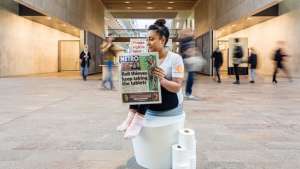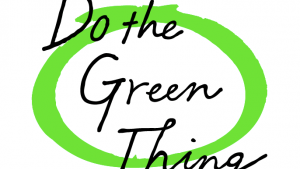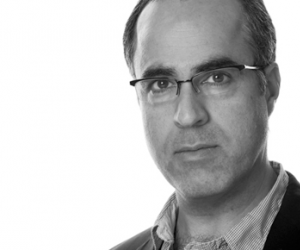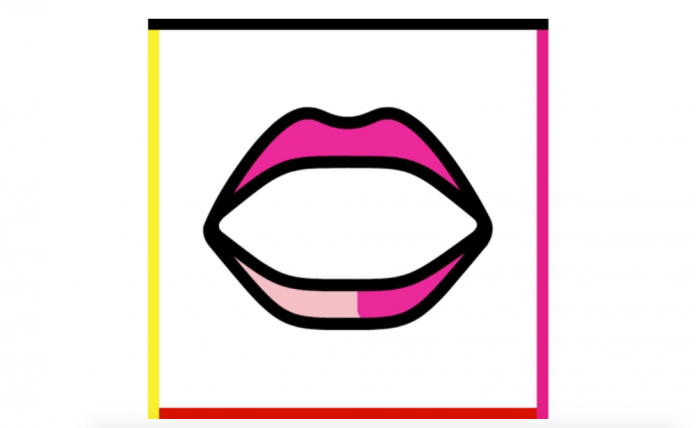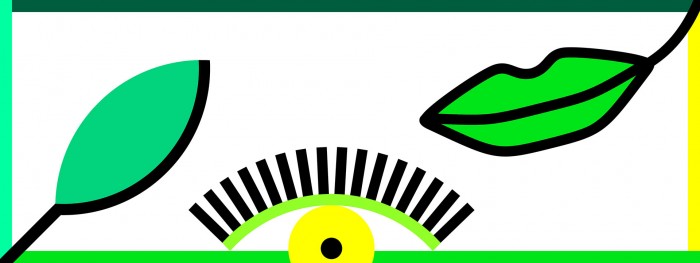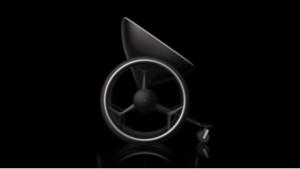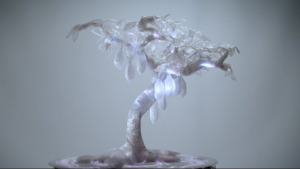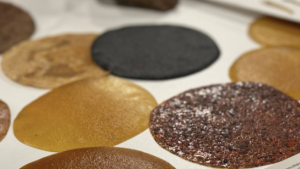Earlier this year, Do The Green Thing spoke to three groups of young women at different stages of adolescence. We wanted to understand how they feel about make-up, its impact on the environment and what they think they can do about it.
With its promotion of overconsumption, its excessive packaging and dubious ingredients, the beauty industry is pretty bad for the environment. But as consumers (and as lovers of make-up) we have the power to change that. The latest issue of Do The Green Thing, "Not another make-up tutorial" explores the connection between make-up and the planet, drawing from the experiences of girls and young women to find solutions that we can all feel better about.
Ah, Halloween, the scariest time of the year. While Halloween make-up can strike fear into our hearts, the cosmetics and beauty products we wear the rest of the year are pretty scary too.
Of course, just like anything that modifies a woman’s appearance, make-up is a topic of fierce debate amongst feminists, men’s rights activists, columnists and politicians where it is alternatively framed as a great equaliser and a terrible divider, as a tool of empowerment and a whip of oppression, as a bold sign of confidence and a shameful mark of insecurity.
The global cosmetics market was valued at more than £130bn in 2015.
But there’s one area that the make-up debate hasn’t reached. For all our introspection on the harmful nature of gender binaries, the elevation of Western beauty standards and the psychological effects of the multi-billion-pound beauty industry, there’s been little debate - and there is woefully little public awareness - about how our collective pursuit of beauty affects the environment.
For starters, the global beauty industry encourages and profits directly from overconsumption.
In 2015, consumers were expected to spend an average of £342.90 on beauty and skincare – a record high.
A 2015 survey of 4000 women found that on average make-up consumers own just shy of 40 cosmetic products each – only five of those 40 items were used daily. As the influence of traditional beauty brands wanes, this level of overconsumption is increasingly encouraged by product endorsements from YouTube stars like Michelle Phan, Bunny Meyer and the UK’s own Zoella.
Secondly, there’s the waste generated by the cumulative use of cosmetics over time.
The average British woman spends a full nine days a year applying make-up to her face. She’ll also spend £18 000 on beauty products over her lifetime.
Take face wipes, the most popular beauty product on shelves today. The average British woman will buy 323 packs of face wipes in her lifetime, all of which will end up in a non-biodegradable waste pile alongside the incomprehensible amounts of packaging ‘protecting’ our favourite foundations and moisturisers.
L’Oreal launches 5000 to 8000 new products per year.
And then there’s the ingredients themselves.
There is lead, petroleum and crushed beetles in our lipstick. There is whale vomit in our perfume. An estimated 20 000 children work in mines retrieving mica, the mineral that adds an iridescent shimmer to some eyeshadows and blushers. Preservatives in moisturisers have been linked to genetic mutations in amphibians. Exfoliating microbeads, the tiny pieces of plastic found in some face washes, are so small that they bypass water filtration systems, ending up in the sea and in the tummies of marine life and birds.
Haunting stuff.
Still, it’s hard to imagine grown women, many of whom wear make-up every single day, will suddenly start binning their bronzers and garbaging their lip gloss en masse.
As Harvard psychologist William James declared in his groundbreaking text The Principles of Psychology, “In most of us, by the age of thirty, the character has set like plaster, and will never soften again.” Like most habits, our relationship with cosmetics hardens as we age, and changing a personal care routine like make-up application becomes more difficult. You know, old dog, new tricks and all that.
Instead, we should look to people who are younger, with their habits less formed. Specifically, members of Generation Z, born between 1996 and 2010 and commonly referred to as ‘Centennials’.
Most Centennials are now navigating (read: surviving) some stage of their adolescence - a crucial developmental stage that starts at about 10-years-old and can extend into the early 20s. It is in adolescence where your sense of self is established - when you begin to answer the question ‘Who am I?’
36 per cent of seven- to 10-year-old girls in the UK say people make them feel like the most important thing about them is the way they look.
Adolescence, full of all its major cognitive and physical transformations, is when young people begin to establish their relationships with their own sexuality and personal appearance and will define a value system that will shape their decision-making into adulthood.
The average age for a girl in the UK to start wearing make-up is 11 – three years younger than it was in the previous decade.
Because most girls start wearing make-up between the ages of 8 and 13, the race is on to market to Centennials as they reach the intersection of adolescence, capitalism, beauty standards (*cough* sexism *cough*) and social media. Brands and bloggers alike know that building early awareness and loyalty amongst the dominant influencers of tomorrow is a vital – and extremely lucrative – opportunity.
Some of the most popular kids’ cosmetics sets on Amazon, Toys R Us and Argos are aimed at children as young as three.
But it is also an opportunity for climate activists, eco-conscious brands and even causes like ours.
Unlike their oft-maligned generational older sibling, the Millennial, who is characterised by her self- involvement and co-dependence (*waves*), a Centennial is generally considered to be more resilient.
She is also more progressive and socially-minded than any previous generation. In a recent US survey, 72 per cent of young respondents said they were willing to pay more for more sustainable or socially-minded products.
In the US alone, Gen Z receives about $17/week in allowance – amounting to $44bn in spending power each year.
In many countries, Centennials will be the first to learn about climate change in primary school, and they will have grown up watching its devastating effects on our planet. Perhaps they will be the generation brave enough to fix it.
So, what needs to happen to make that change possible?
Well, we can encourage their critical thinking toward unsustainable aspects of modern life, including the beauty industry. Centennials may be impressionable, but they are not without power. They must arm themselves with just enough cynicism and side eye to reject the promise of store-bought empowerment. With billions in spending power each year, the industry would have to take notice.
Demand for natural and organic skincare and beauty products is booming, but regulation is still poor.
We need to give them clarity and transparency. Traceability in the beauty supply chain is notoriously complex, but brands should be able to clearly tell consumers what their products contain, where those ingredients come from and what, or who, was harmed in their production. Young people want to make more socially-conscious choices. They need information to do that.
More than 11 million people subscribe to Zoe Sugg’s YouTube channel. Maybelline UK has a little more than 10 000 subscribers.
And we need to reach out to young people in a way that resonates. Centennials have grown wary of traditional advertising and unrelatable celebrities, instead looking to their peers and the (curated) authenticity of beauty bloggers and the internet famous like Kylie Jenner for guidance. Such influencers could usher in significant change if their powers were harnessed for good.
Kylie Jenner’s own-brand Kyshadow range sold out online in just one minute.
While there are certainly discussions to be had – about make-up’s historical roots in patriarchy, about commodity feminism and unreachable standards of beauty perpetuated by an insatiable capitalist machine that insists if we simply spend enough time and money, we’ll finally be beautiful, we’ll finally be happy – ultimately, make-up is a deeply personal pursuit and we should not lecture young people for making personal choices about it.
Thankfully, there are plenty of good choices to make:
- To buy better.
- To buy less.
- To experiment with homemade options.
- To go #makeupfree like Alicia, Kim and Gabrielle.
- Or to continue to wear it any way you damn well please.
Make-up is a tool, not a mask – wield it as you wish.
As for Centennials, with all of their worldliness, energy and pragmatic optimism, they could finally be the generation that overcomes the cultural expectation to buy themselves beautiful.
As they graduate past adolescence, with any amount of make-up on their faces, there is the distinct possibility that they will also be the first generation of climate-conscious consumers our planet so desperately needs.
Now Watch This
In preparation for this issue, the Do The Green Thing editorial team spoke to girls and young women from three different groups in London: young football players at Hackney Laces, teenage activists at Livity and creative professionals from The GirlHood.
All were engaged, ambitious and curious but felt under-informed about make-up’s impact on the environment. They also downplayed their own power (spending and otherwise) in trying to change the world.
And that’s why we made this film. A different sort of make-up tutorial that doesn’t preach but does provoke. With used face wipes acting as ‘talking heads’, the film relays the collective thoughts, insights and solutions shared by many of the girls we interviewed.
We hope they – and you – like it.
All illustrations by Sarah Boris.

